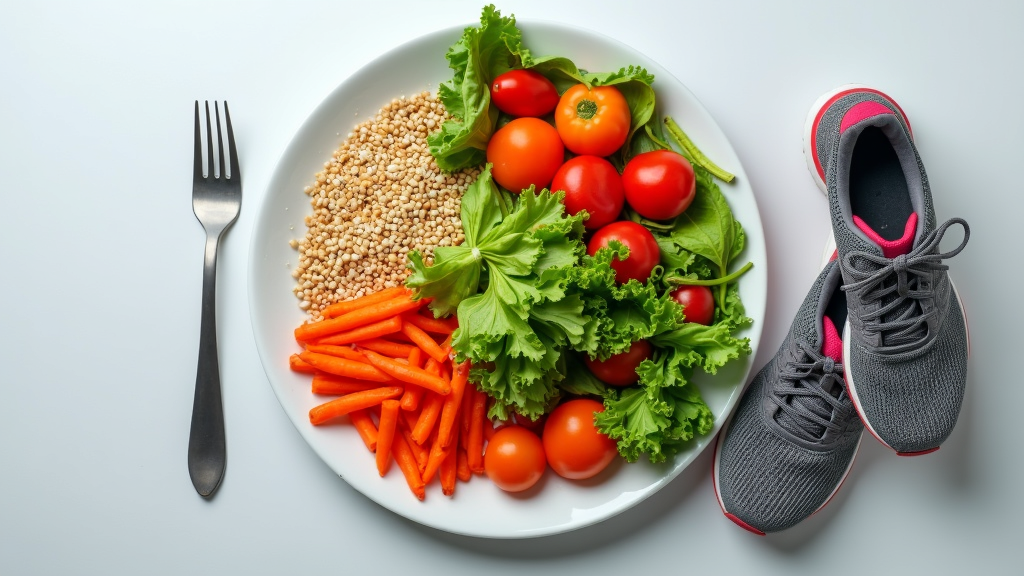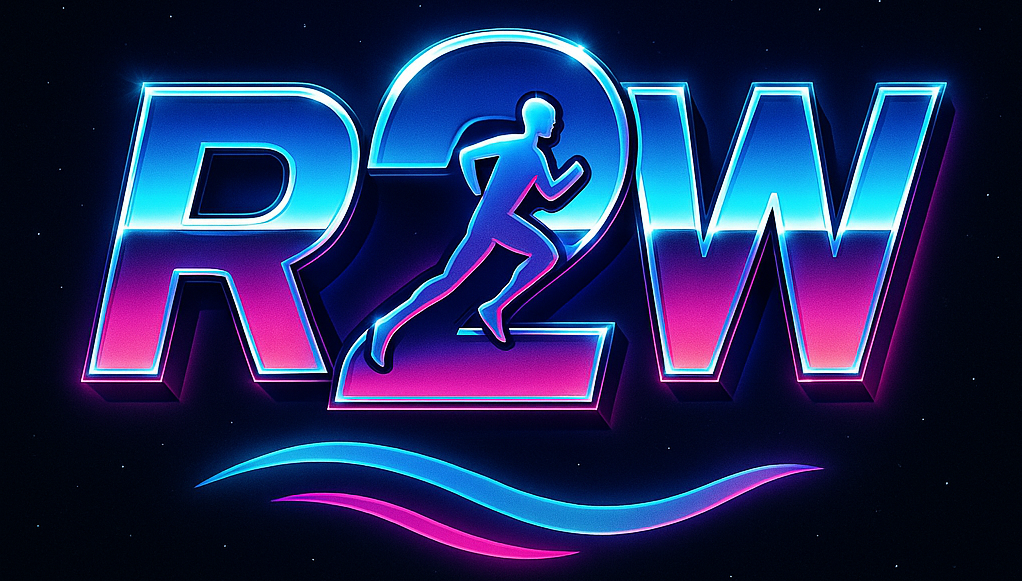 The phrase “You can’t outrun a bad diet” gets repeated a lot in fitness circles, but if you’re just starting out, it might sound like another catchy slogan. What does it really mean, and why do so many trainers, nutritionists, and health experts keep coming back to it?
The phrase “You can’t outrun a bad diet” gets repeated a lot in fitness circles, but if you’re just starting out, it might sound like another catchy slogan. What does it really mean, and why do so many trainers, nutritionists, and health experts keep coming back to it?
If you’ve tried exercising regularly without seeing the changes you want, or if you feel lost about where to focus your efforts, this article is here to clear things up. Understanding this mantra can help you make sense of why eating habits matter so much, no matter how active you are.
Here’s a straight-up, no-nonsense guide to why exercise and nutrition work better together. Let’s see how beginners can start on the right foot with both.
1. What Does “You Can’t Outrun a Bad Diet” Actually Mean?
This saying basically points out that working out, no matter how much, can’t erase the effects of poor eating habits. Jogging, cycling, or hitting the gym does burn calories, but if unhealthy foods fill your plate every day, those workouts barely make a dent.
For example, running a mile burns roughly 100 calories for most people. But a single donut or canned soda can have 200 to 300 calories, sometimes more. It’s really quick to eat back double what you just worked off. If you exercise regularly but always reach for fried, heavily processed, or super sugary foods, you might feel stronger but not see the changes in your body you expect.
Why This Matters for Beginners
- Exercise is only one part of the equation when it comes to weight loss or better health.
- Healthy eating helps you get the most out of your workouts, recover faster, and feel better overall.
- Understanding this early can help you avoid frustration and set more realistic goals from day one.
2. The Basics of Calories: How Diet and Exercise Work Together
Calories are just a way to measure energy. Your body needs a certain number of calories each day just to keep basic functions going, like breathing, thinking, and digesting. Add movement and exercise, and that number goes up. Eat more calories than your body needs, and the extra gets stored, usually as fat. Eat fewer, and your body uses up reserves.
Why Exercise Isn’t a Free Pass
- Even intense workouts don’t burn nearly as many calories as you think. An hour of running might burn 500 calories, but a burger with fries can be more than double that.
- Most folks overestimate what they burn during a workout while underestimating the calories in meals and snacks.
- Relying on exercise to “undo” unhealthy meals leads to a frustrating cycle that rarely works out in the long run.
I learned pretty quickly that I couldn’t just keep eating pizza and expect my runs to make it all disappear. Once I started paying more attention to what went on my plate, results changed fast.
Try tracking your meals for a week and see how those calories add up. You might be surprised by which treats or drinks pack the biggest punch. Remember, it’s not about cutting out everything you love; it’s about making smarter choices most of the time. For beginners, learning where calories sneak into everyday eating is a game changer.
3. How Food Choices Affect More than Just Weight
The mantra isn’t just about body weight. The foods you eat have all kinds of effects on energy, mood, performance, and even your immune system. When I switched up my snacks to include more fruits, nuts, and whole grains, I wasn’t just dropping pounds; I noticed way more stable energy throughout the day.
Key Ways Diet Impacts You Beyond Calories
- Energy: Sugary and heavily processed foods can cause crashes that make even simple workouts harder.
- Recovery: Protein, healthy fats, and plenty of colorful veggies help muscles rebuild after exercise.
- Inflammation: Too many processed foods can ramp up inflammation, making exercise more difficult and recovery longer.
- Mood and Focus: Eating a mix of whole foods can help keep your mind sharp and moods steady throughout the day.
Eating well makes sticking to new exercise routines a lot more doable. You’ll feel it in your energy and see it in your progress. When your body feels fueled, getting moving gets much easier and actually starts to feel rewarding.
4. Quick Guide: Building Healthy Habits from the Start
If you’re new to balancing food and fitness, here are a few simple ways to start making both work for you. It’s not about dieting, but about swapping out some habits for smarter options.
Simple Steps for Better Results
- Start with More Plants: Add an extra veggie or fruit to every meal. The fiber helps you feel full and keeps blood sugar in check.
- Watch Liquid Calories: Sugary beverages pile on calories with almost no nutrition. Water, tea, or black coffee are way better bets.
- Go for Whole over Processed: Think whole grains, lean proteins, nuts, and seeds instead of boxed or bagged snacks.
- Plan for Protein: Adding fish, chicken, beans, or tofu helps muscle recovery and keeps cravings away.
That first small switch is often all it takes to notice a difference in how you feel and perform, even if you’re only working out a couple times a week. As you go, those smart swaps can add up. Meal planning, even if just one day in advance, can keep things on track. You don’t have to prep everything on Sunday night. Just having a healthy lunch set aside or a snack to grab as you head out can make sticking to your goals a lot easier.
5. Busting Common Myths Around Exercise and Diet
Plenty of ideas float around in the fitness world that sound right but end up holding people back. Here are a few I wish someone had busted for me sooner:
- “I Can Eat Whatever I Want, As Long as I Work Out”: Even pro athletes pay close attention to their food choices. Exercise has tons of benefits, but it can’t fix what a steady junkfood diet does to your body.
- “Healthy Eating Is All or Nothing”: You don’t have to overhaul everything in one go. Even small tweaks make a big difference over time.
- “One Cheat Meal Will Ruin Everything”: Occasional treats are part of real life. Consistency beats perfection. One meal won’t set you back as much as daily choices.
- “Supplements Can Do All the Work”: While some supplements can help, they don’t replace real, whole foods. Focus first on what’s on your plate.
6. Making It Sustainable: Practical Tips for Busy Lives
If juggling meal prep, workouts, and a job sounds overwhelming, you’re definitely not alone. Here’s how I found balance without spending my whole week stressing about food or exercise:
- Meal Prep in Batches: Cook larger portions of healthy basics like rice, veggies, and lean proteins, then mix things up for quick meals throughout the week.
- Keep Healthy Snacks Handy: Nuts, fruit, plain yogurt, or cut veggies are way better for fueling up between meals than chips or candy.
- Don’t Skip Meals: Skipping to “save” calories usually backfires and leads to overeating later. Steady, balanced meals work better for energy and mood.
- Celebrate Non-Scale Victories: Notice when your workouts feel easier, you sleep better, or your clothes fit more comfortably. The scale doesn’t tell the full story.
- Find Activities You Enjoy: If the gym isn’t your thing, try walking, dancing, or a local class. Consistency comes easier when you’re having fun.
Setting reminders to drink water and stretch throughout your day can also help keep energy steady. Think ahead to potential challenges. For example, plan for busier days with quick grab-and-go meals that are healthy. If eating out, look for grilled options or load up on veggies as sides. Small, mindful choices can really add up over time.
Final Take
“You can’t outrun a bad diet” isn’t about guilt or shame. It’s a reminder that what you eat has just as much impact as the workouts you do, and sometimes even more. Putting energy into both exercise and food choices makes feeling better and seeing progress a whole lot simpler.
It’s never too late to adjust your habits. Your future self (and your body) will thank you for building a solid foundation with both movement and mindful eating from the start. Remember, every positive change counts and builds toward lasting results.
